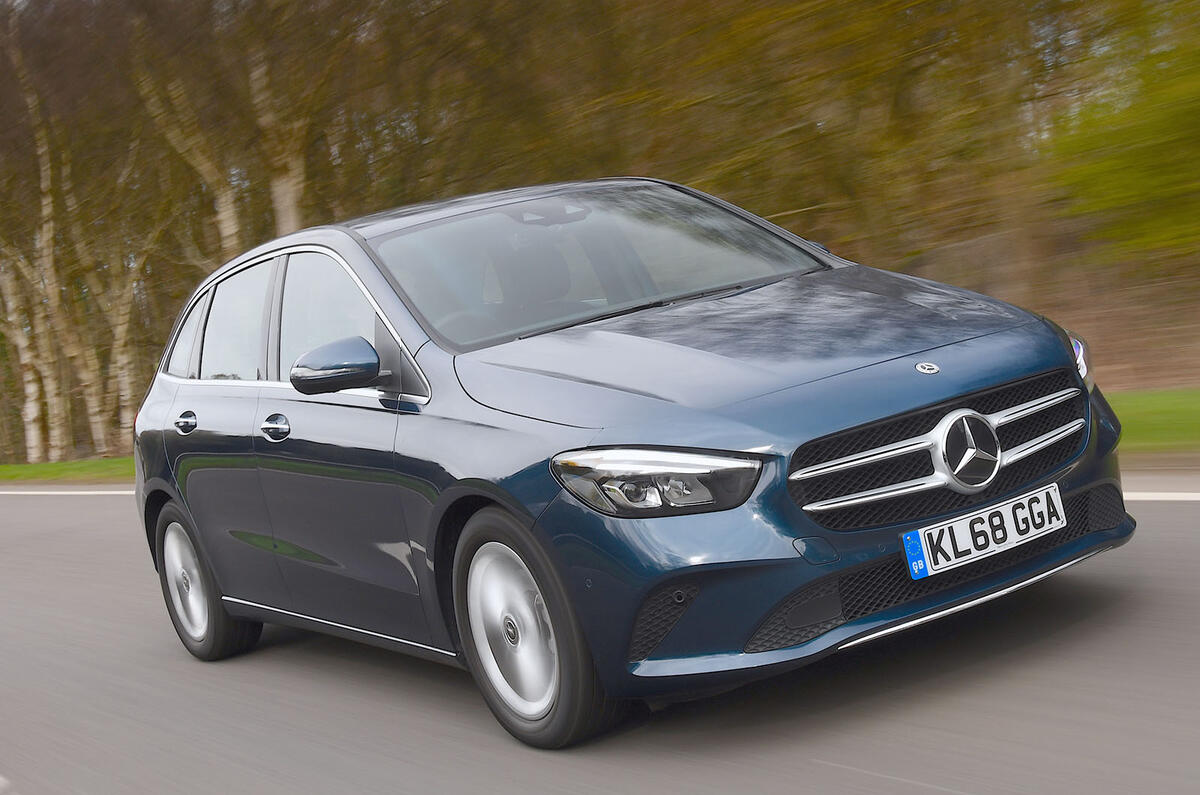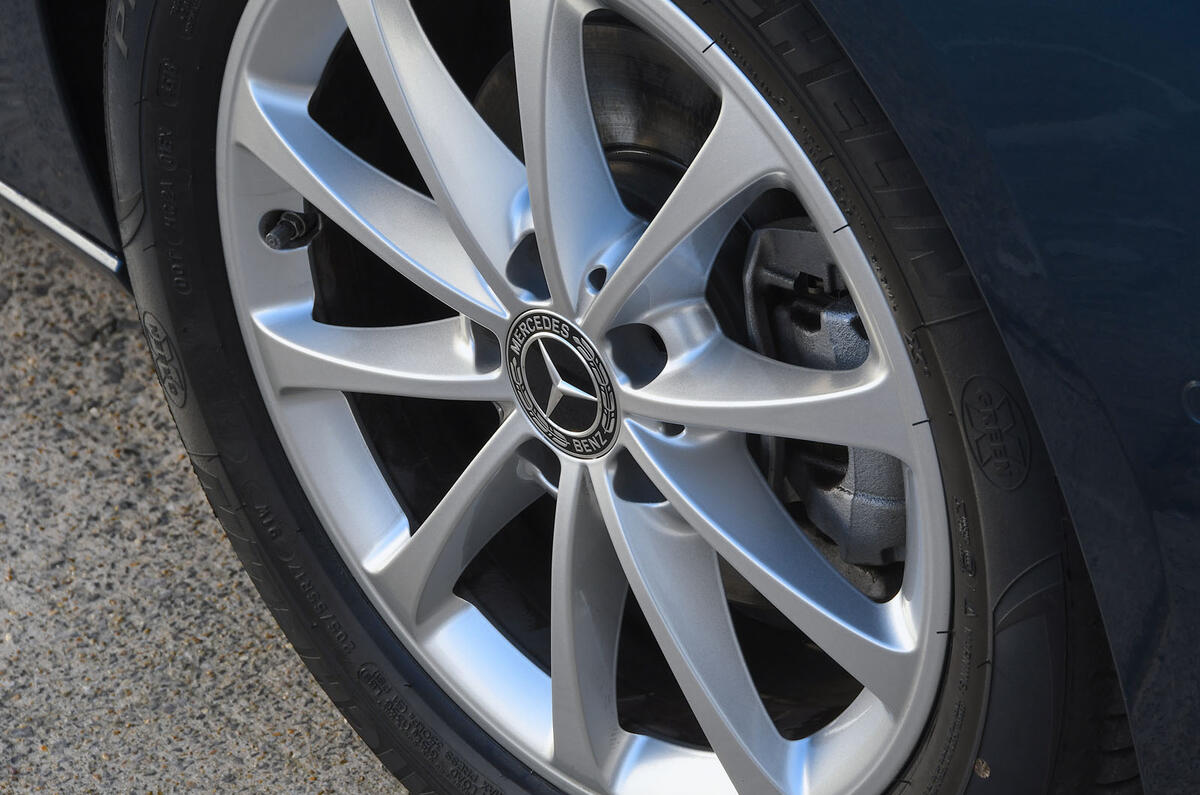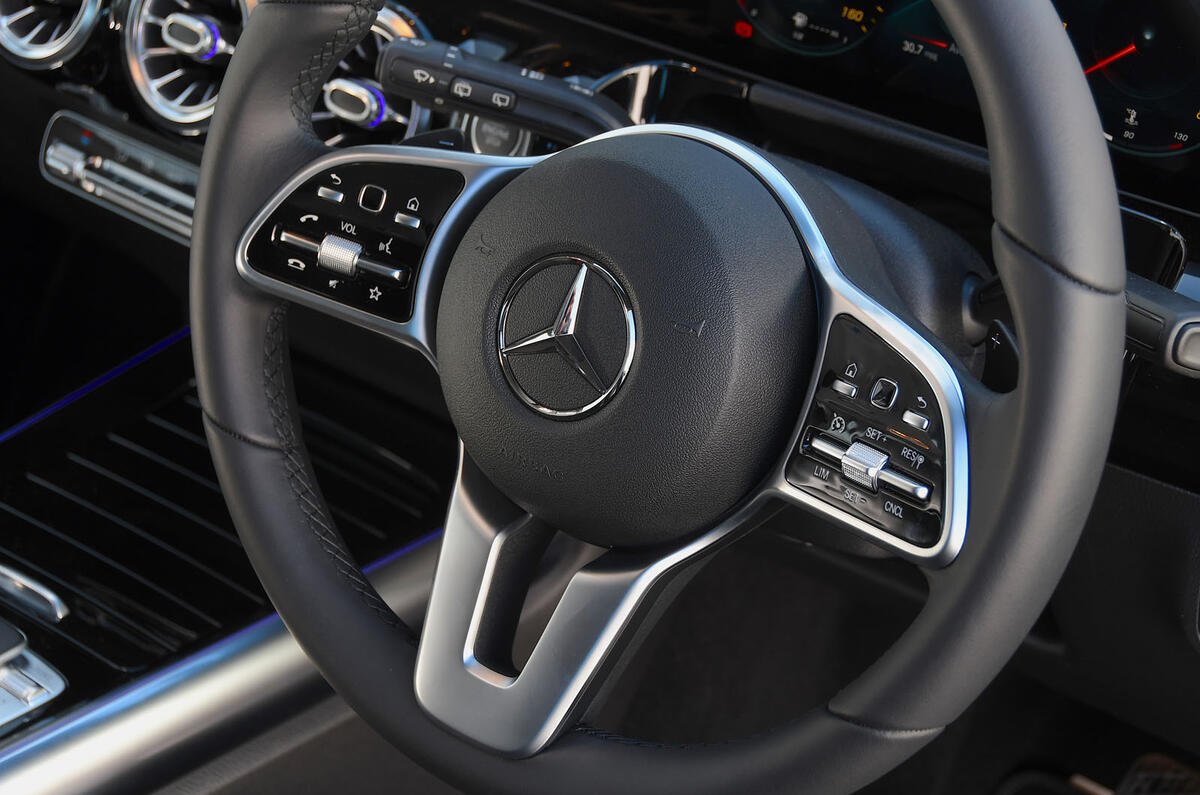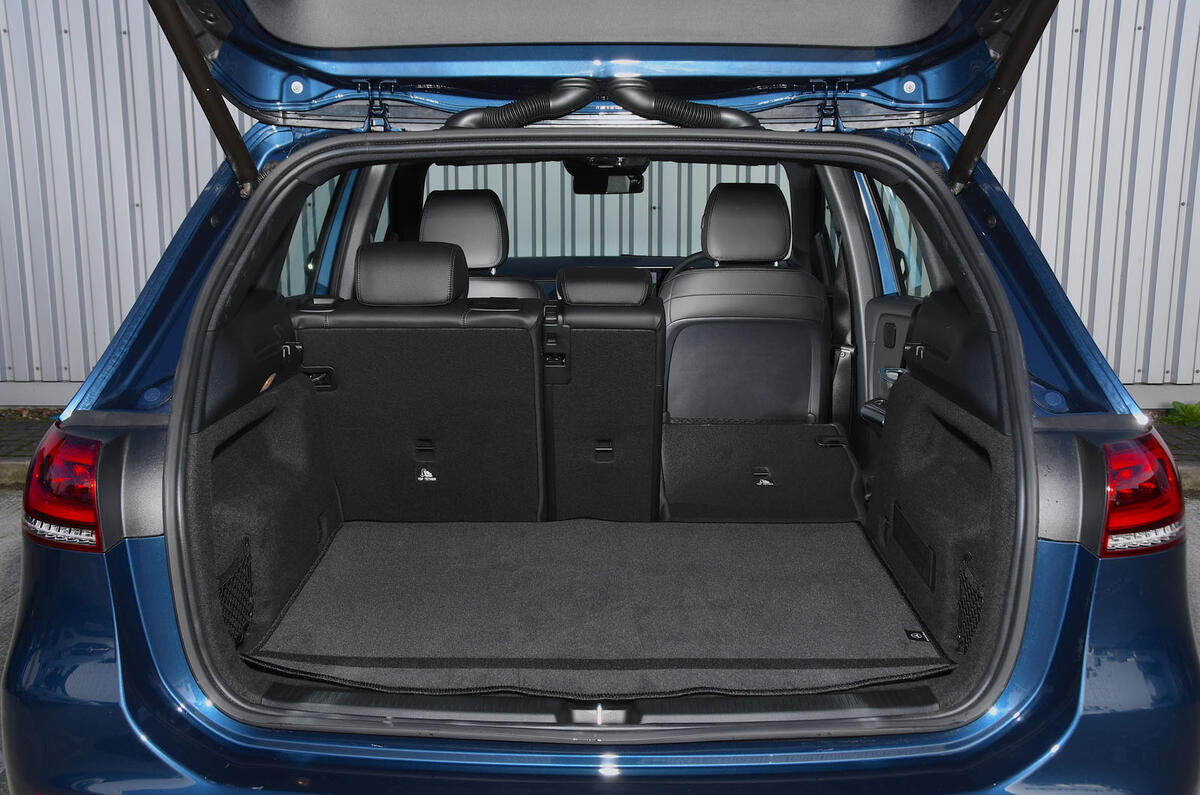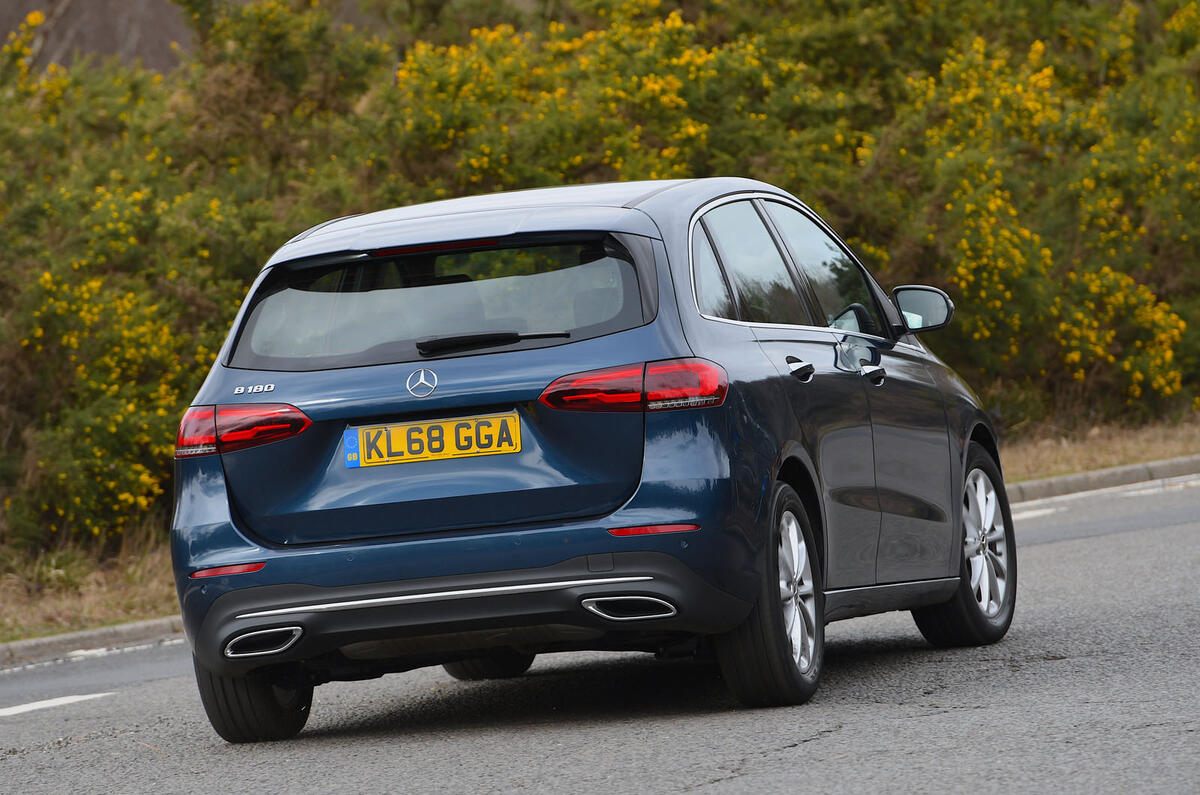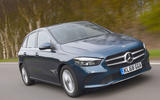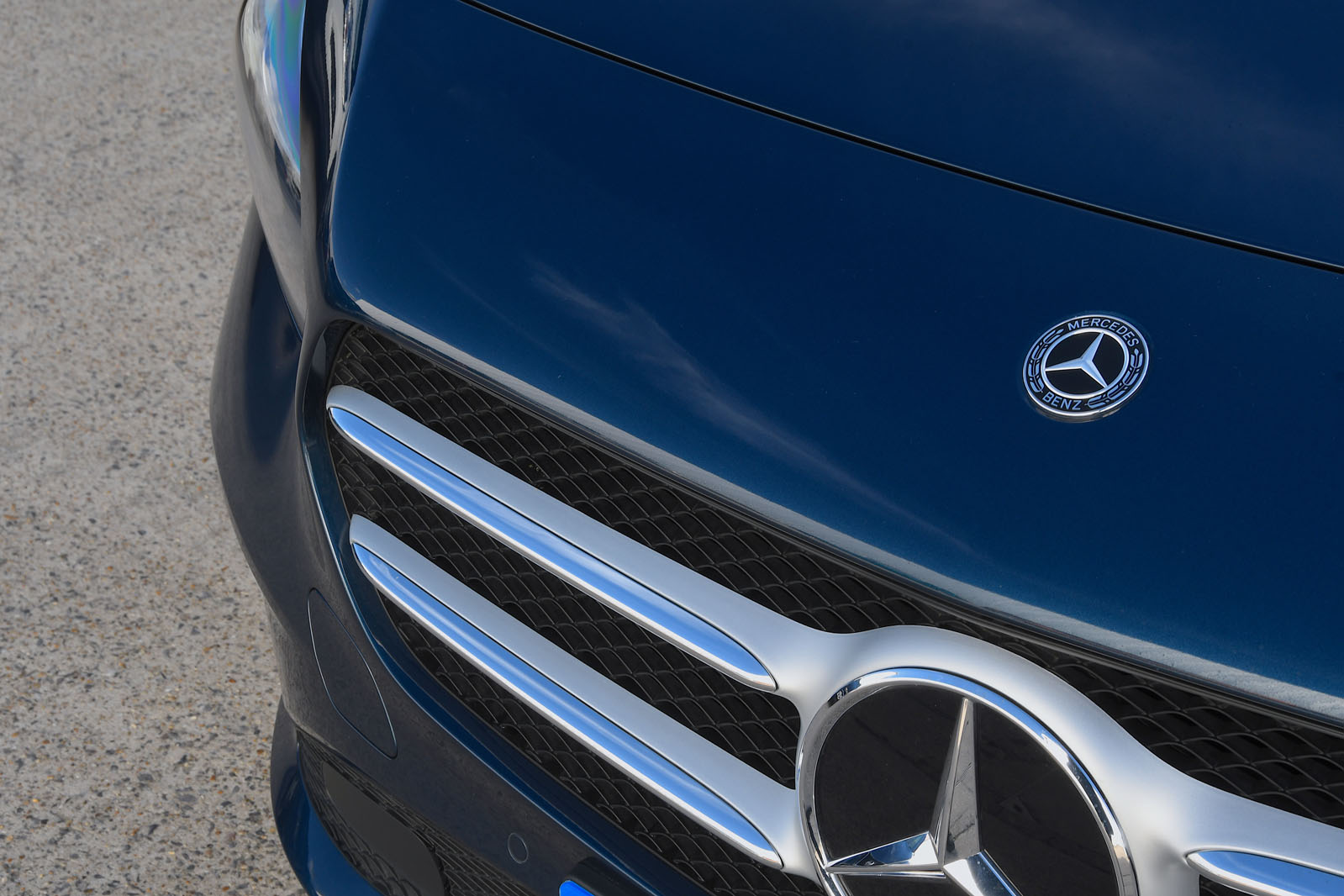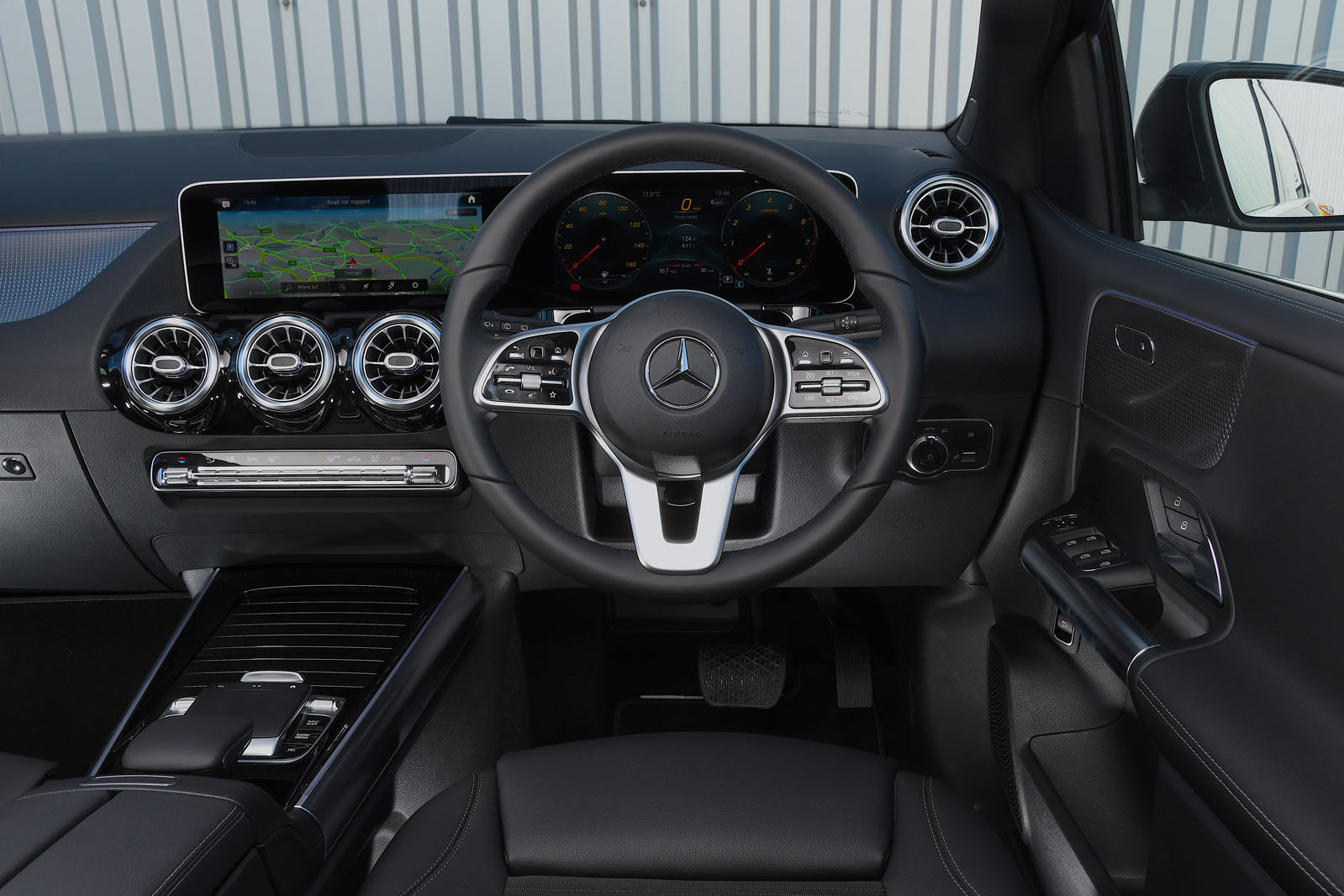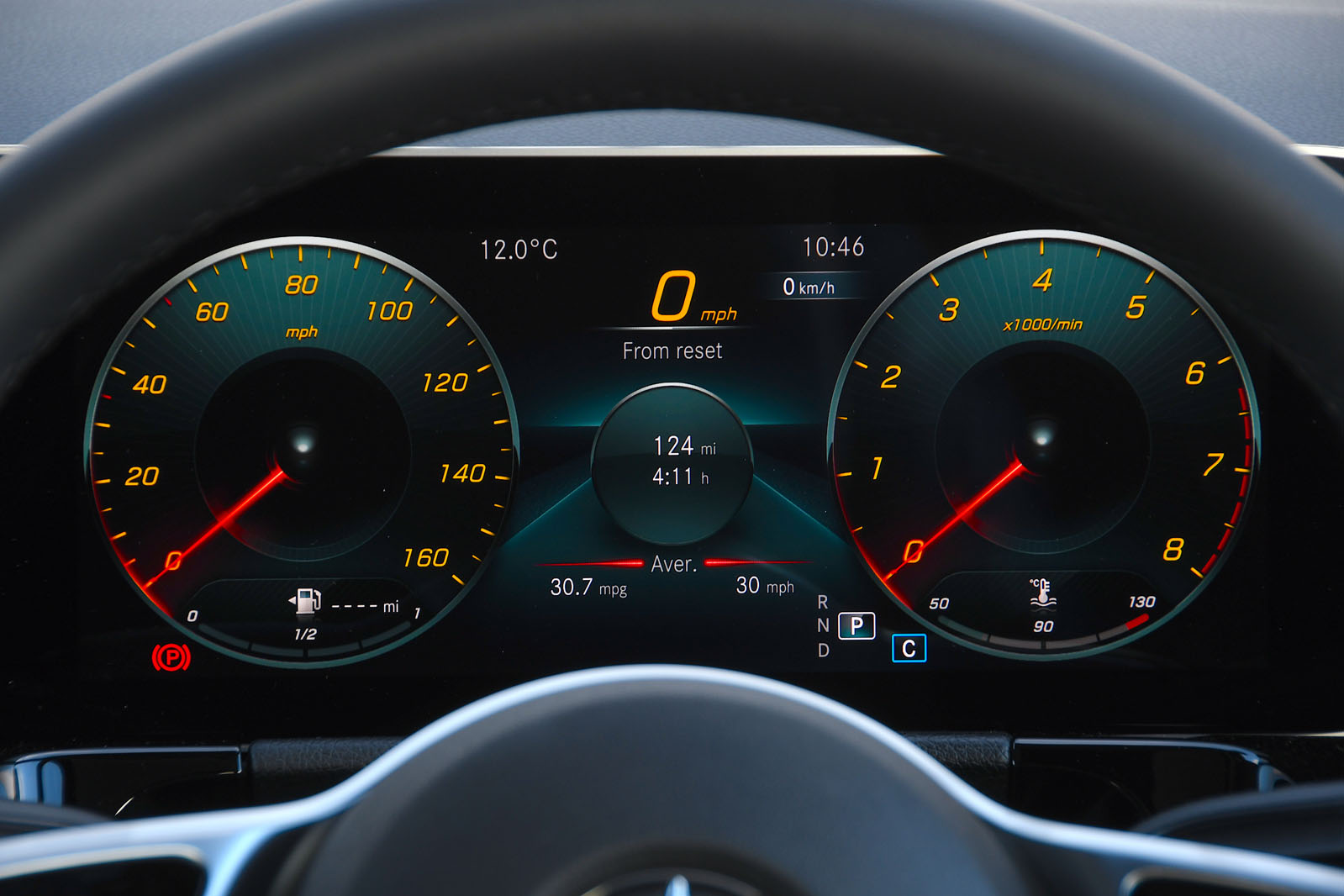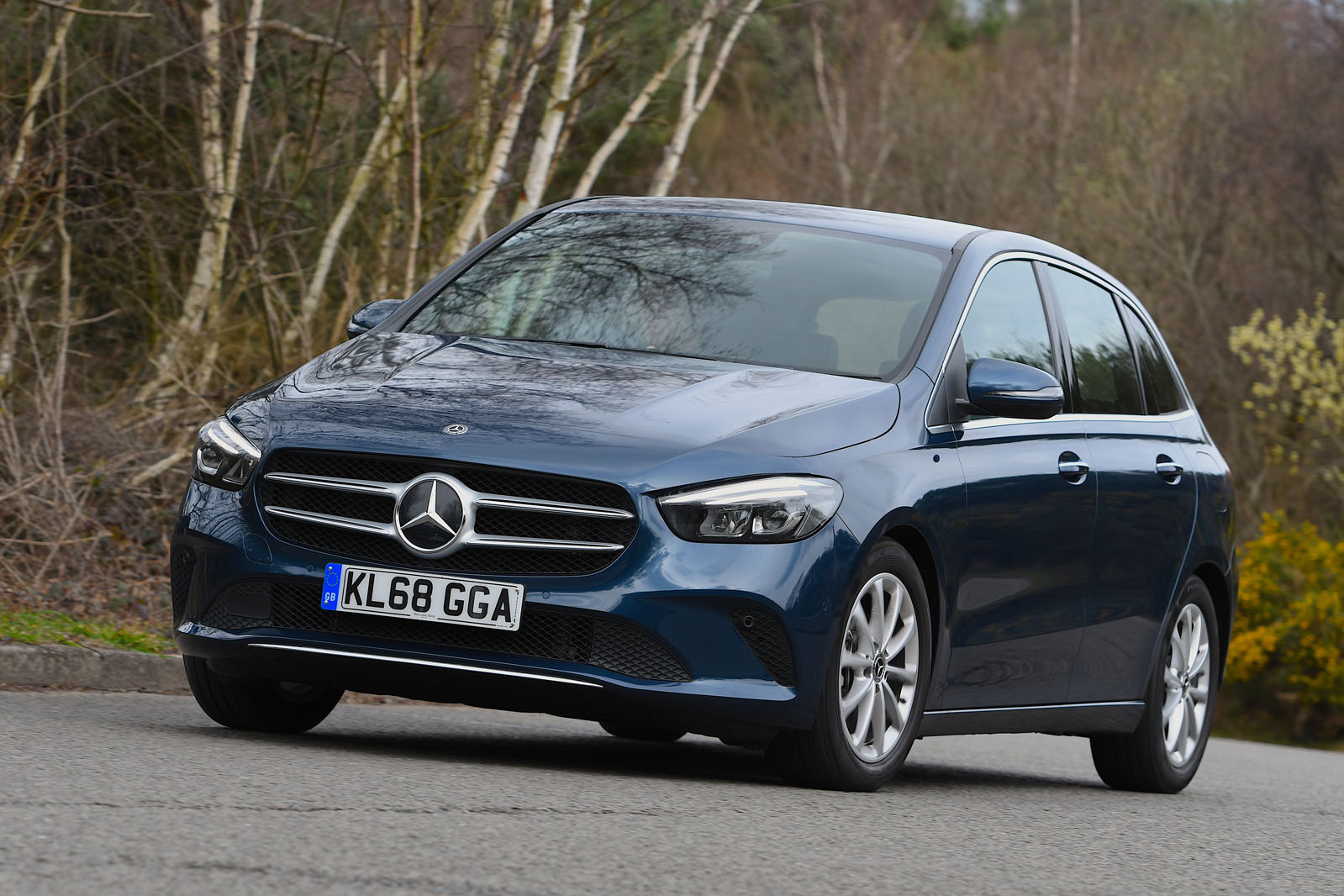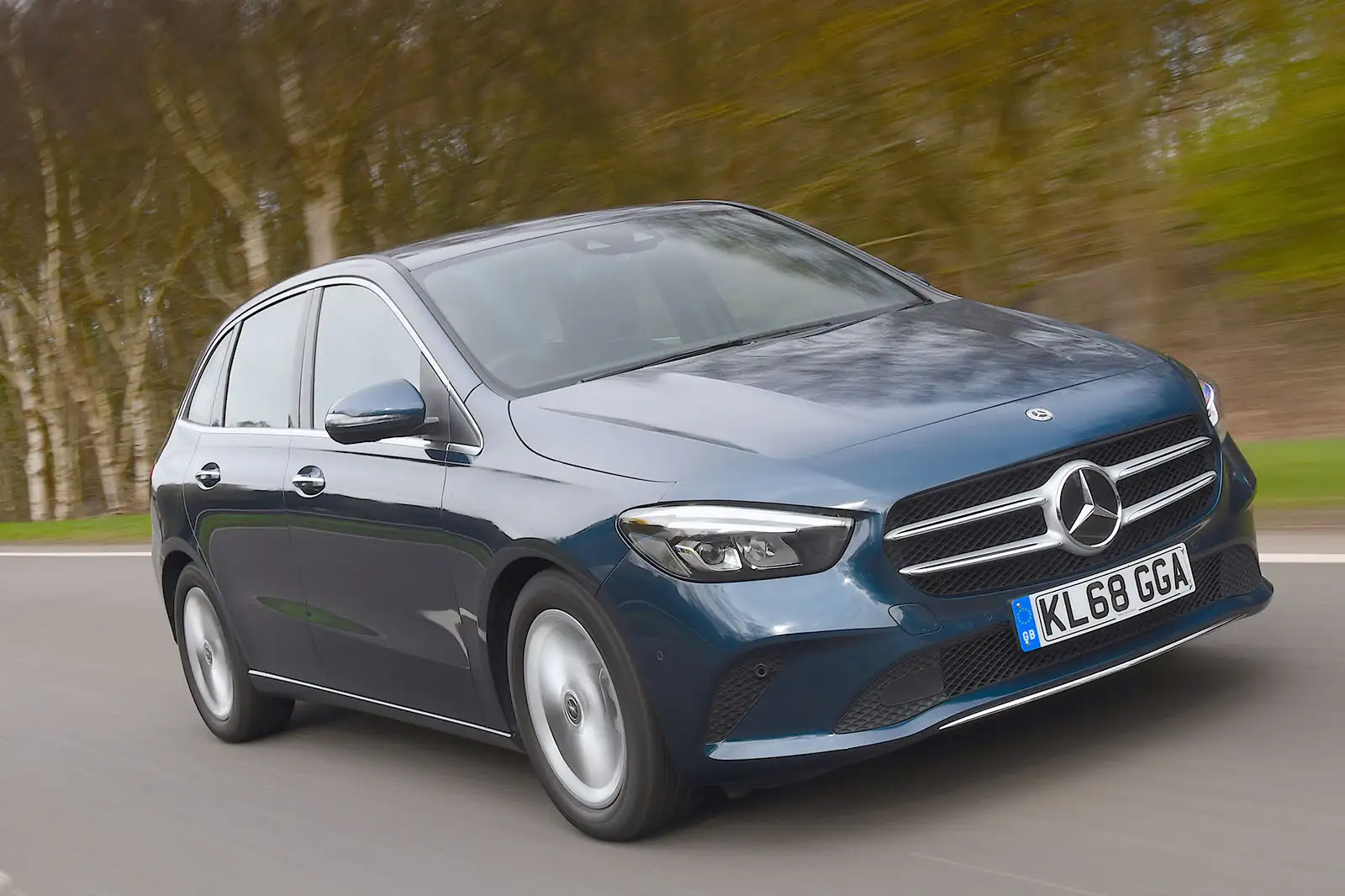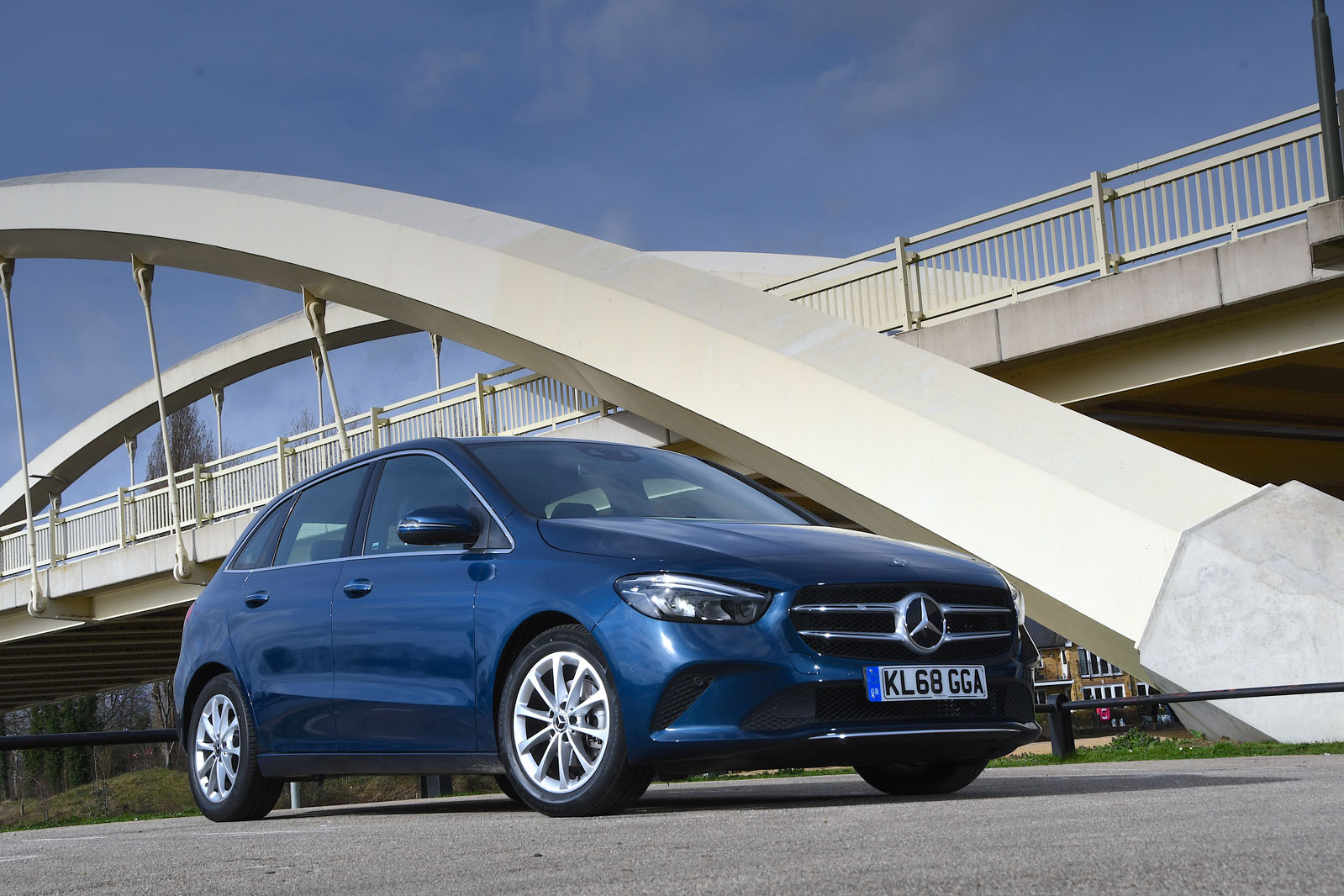If stylistic concessions to the exterior are made to allow for a more practical car overall, the interior takes almost full advantage of that. There is only about an inch more head room for passengers in the front and rear seats than the A-Class, but that car is far from cramped, and the cleverly lowered beltline of the B-Class gives its cabin a genuinely pleasant, airy ambience unmatched among its rivals.
It’s a feeling exaggerated by seats that set the hip point of front seat occupants a whole 90mm higher than in the A-Class, and while the trade-off for this is a driving position that feels more MPV than hatchback, it also makes for satisfyingly effortless ingress and a commanding view of the road ahead.
Indeed, there’s barely any need to drop yourself down into the confines of the B-Class, and with the increased width of this new platform, there’s now also even more space for knees and elbows. Elsewhere, we measured (allowing for a driver of average proportions) rear leg room at 740mm – just 10mm shy of what you can expect in an E-Class saloon – but due to an intrusively raised section of floor and firm cushioning, middle seat passengers won’t appreciate longer journeys. It is worth noting, too, that there are only two Isofix child seat points in the rear, whereas some rival MPVs offer three.
If its ergonomics impress, the B-Class also succeeds as a luxury proposition because, by the standards of this obstinately sensible class, the interior design and materials used are opulent. The B-Class borrows much from the A-Class – a class leader in this respect – including MBUX high-resolution displays, ‘turbine’ air vents plus high-gloss and soft-touch plastics. Ambient lighting shines crisply across the dash and into the door cards, not only remedying our test car’s monochromatic interior palate but also making this cabin particularly cosseting at night.
However, while the Mercedes scores highly for effortlessly ferrying a family of four, when it comes to their luggage it lacks the versatility of rivals. Unlike the Volkswagen Golf SV and BMW’s 2 Series Active Tourer, there is no option yet of a sliding rear bench (arriving mid-2019) and, at 455 litres, boot space with the rear seatbacks up is also slightly poorer.
The B-Class uses Mercedes’ new MBUX (Mercedes-Benz User Experience) touchscreen infotainment system. As standard, this incorporates two 7.0in screens: one for features such as the sat-nav and radio, the other replacing the traditional analogue instrument binnacle. However, our test car came with the £2259 Premium Package option, which employs a larger, 10.3in display along with a ‘mid-range’ sound system. Our car was also equipped with the £495 Advanced Navigation Package, with augmented reality for the navigation and traffic sign recognition.
It’s possible to get the larger screen – controlled by an unusually effective touchpad – with the £1395 Executive Package, and you should. The quality of the graphics is excellent, as is the fluidity with which it responds to your inputs. The ‘Hey Mercedes’ voice control generally works well, too, as does the augmented reality, which neatly overlays camera images with direction arrows.
Our only criticism is the absence of a conventional USB socket, with Mercedes relying exclusively on USB-C sockets – irritating if you don’t have the right cable or adapter.


